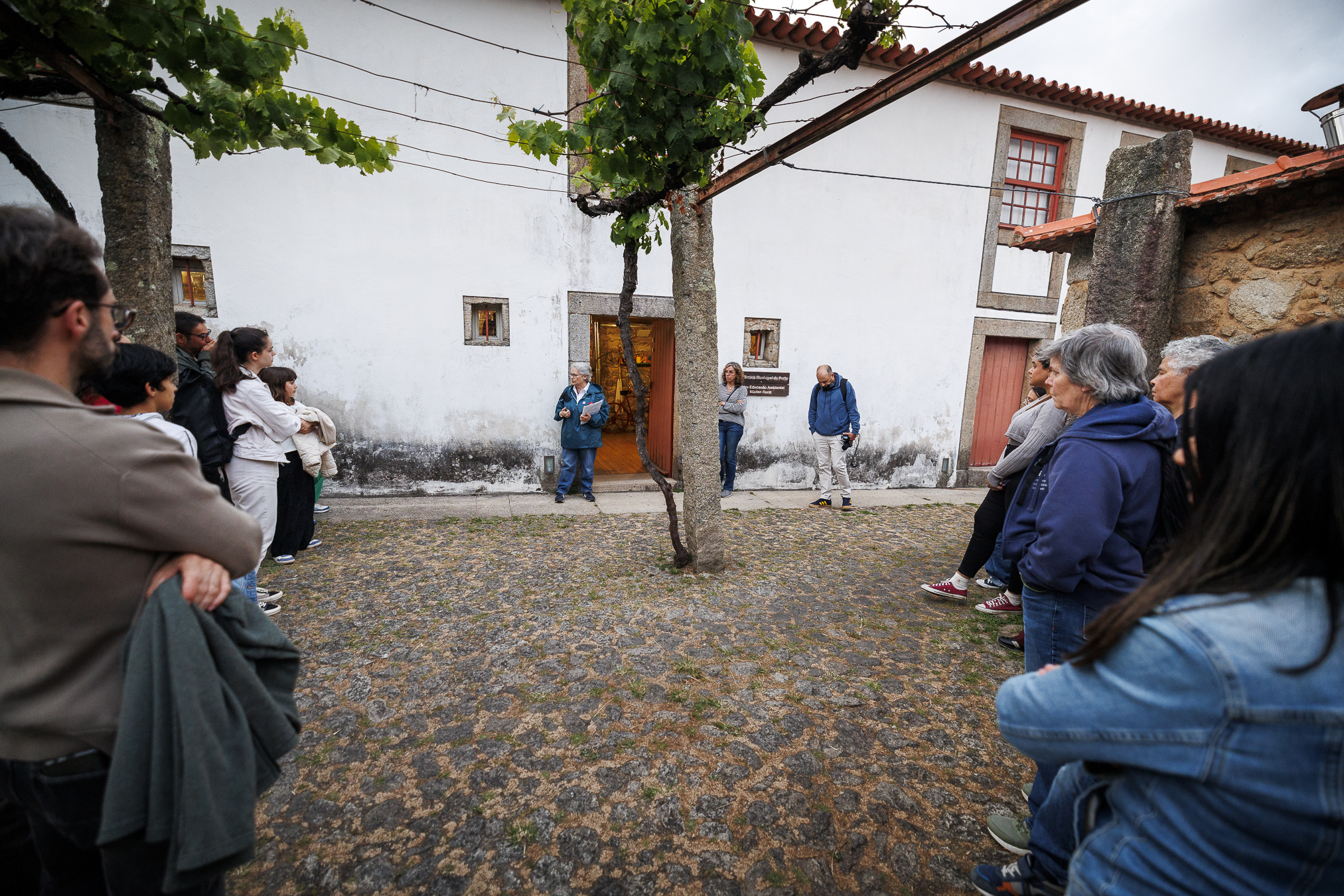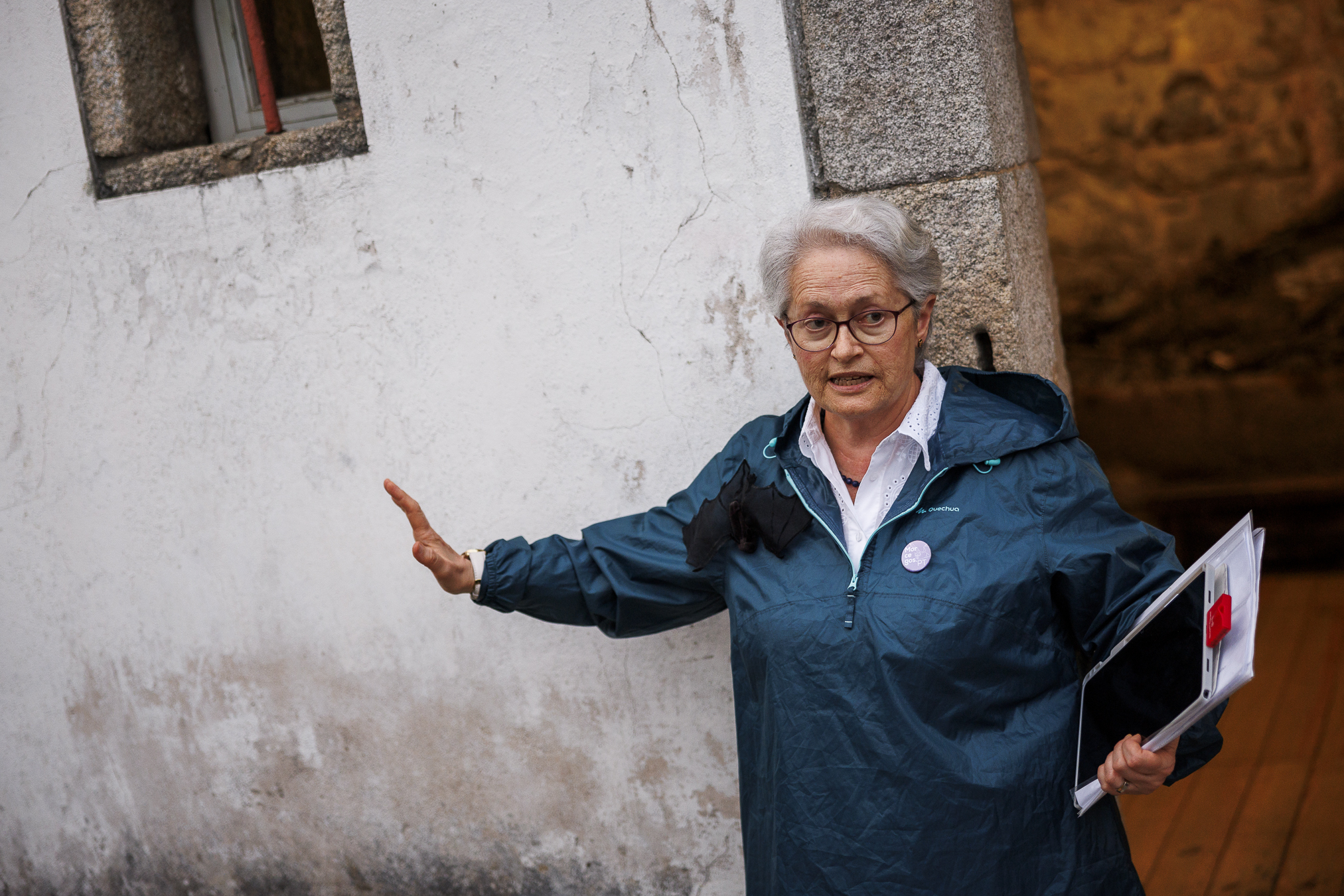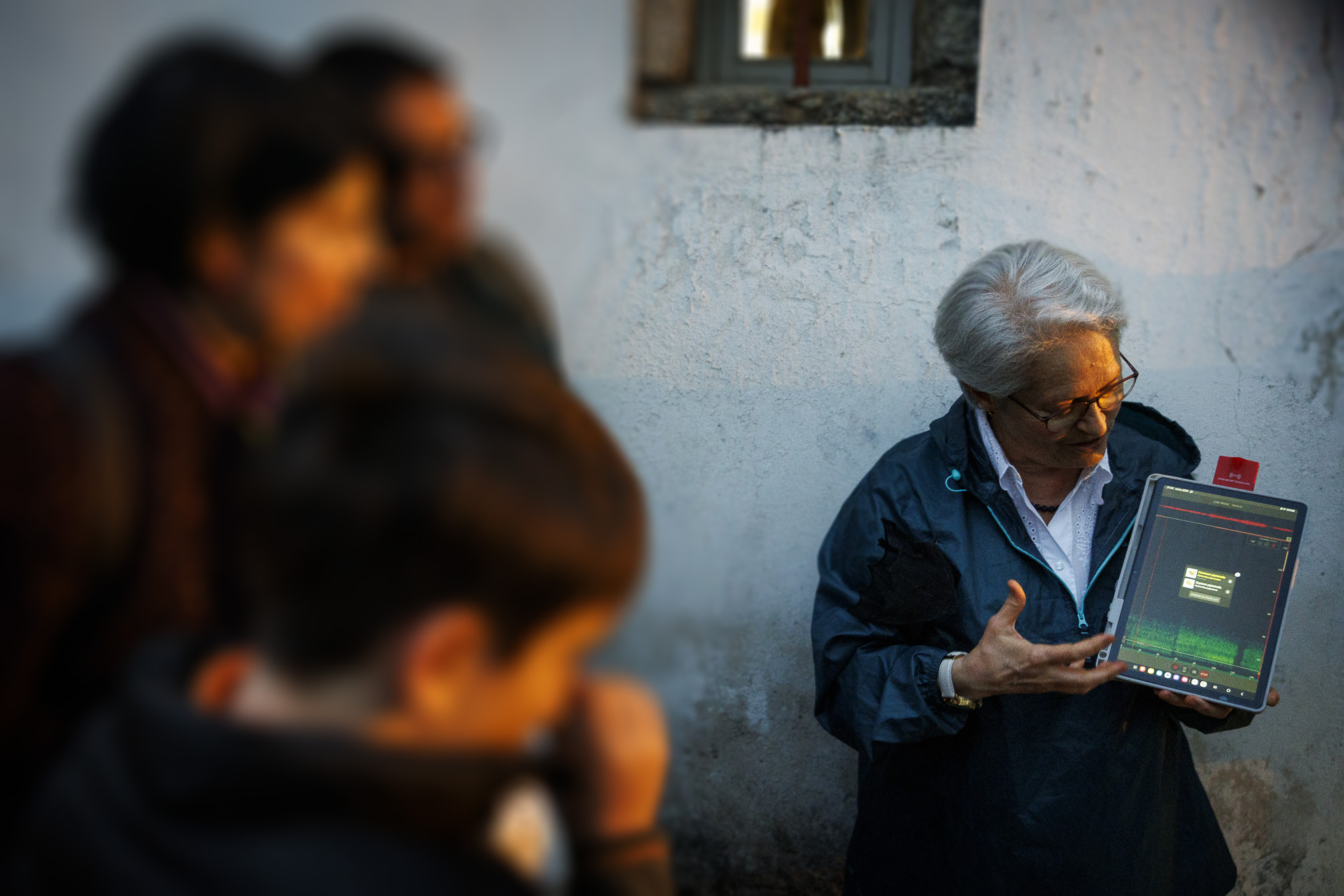EN

© Guilherme Costa Oliveira
The programme Bat Nights celebrates 15 years and continues to bring families, but also more and more tourists, to see and hear these mysterious night creatures. For those who have never seen or heard these small animals in the skies over Porto, this is a good opportunity to do so in different green spaces. During July and August, there are five activities scheduled. Agenda Porto accompanied one outing, in Parque da Cidade.
'Don't take your doubts with you,' says expert speaker Luzia Sousa, in a professorial tone, to the 30 or so people of various ages and nationalities who gather to listen to her explanations before heading out for a field observation. We're hoping to spot specimens of Pipistrellus pipistrellus (dwarf bat), one of the 27 species found in mainland Portugal.
Luzia Sousa, a retired biologist, is the driving force behind Bat Nights, a project she started when she was a curator at the Museum of Natural History and Science at the University of Porto and which, after retiring, she continued to promote through the Environment Department of Porto City Council. "I've always dedicated myself to promoting species that are less liked and therefore less known about. My advantage is that I like bats."

Bat Nights in Parque da Cidade © Guilherme Costa Oliveira

Luzia Sousa © Guilherme Costa Oliveira
This science communicator, a member of the Portuguese association Morcegos.PT and of the EUROBATS working group, wants to publicise the importance of these small mammals that ‘fly with their hands and see with their ears’ in ecosystems. Pollinators, seed dispersers and insect controllers, bats are, according to Luzia, ‘fundamental’. "Rice in some countries, particularly Spain, has a plague at the moment; it's a nocturnal butterfly, the rice borer, which is destroying crops, and its predator is bats. If they stop preying, we'll have to use insecticides..."
It's when it starts to getting dark, and after a moment of questions and answers, that we start to glimpse these little creatures in the sky. Luzia then uses a piece of scientific equipment, an ecometer, so that we can hear them. Bats communicate through ultrasound, or high-frequency sounds that the human ear cannot pick up without special microphones. ‘The dwarf bat, for example, communicates at a frequency of 45 to 55 kHz - and we hear at 19 kHz.’
As well as the participation of local families, Bat Nights have also been sought out by tourists, like Daniela Rodrigues de Lima, 29. A Psychology graduate, she says that while she was researching walks and routes to do in the city, this activity caught her attention. "As I'm absurdly curious, I signed up and I'm loving it. My professional life isn't related to Biology, but I think it's part of the balance we need to seek as a society; it's important to have this kind of knowledge. I found this activity very interesting and I really enjoyed listening to them."
Despite being a free activity, registration is mandatory via the form at ecoagenda.porto.pt.

© Guilherme Costa Oliveira
Share
FB
X
WA
LINK
Relacionados


